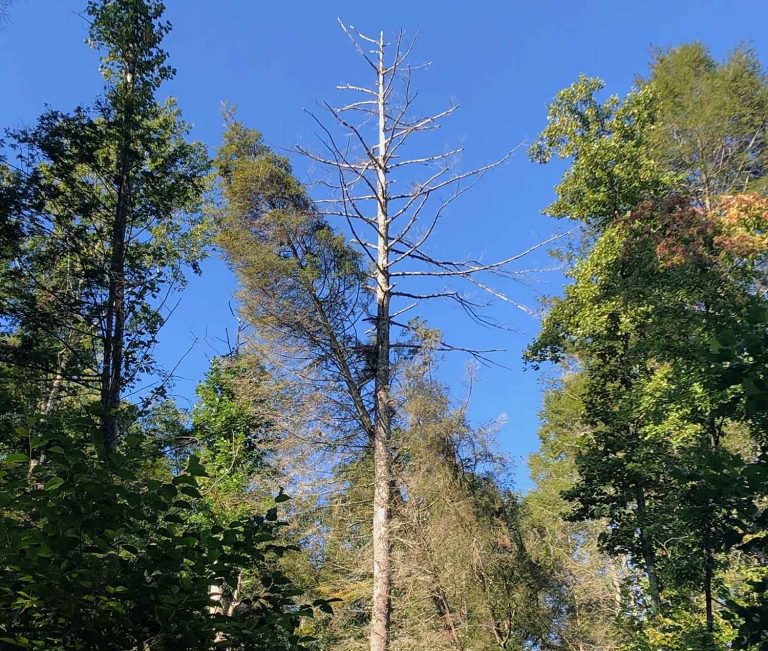
As published in AGDAILY
Too often, my childhood dreams were haunted by Dawn of the Dead’s flesh-eating zombies. In a nightmare made real, and years later, I have to choose between flesh-eating Japanese zombie beetles and poison in order to save my Cumberland Plateau, Tennessee, hemlock trees. Poison, hemlocks and beetles, oh my.
At Coal Creek farm, our forests are being decimated by invasive hemlock Wooly Adelgid (Adelges Tsugae). The professionals recommend poison or zombies to save them. Various beetle infestations across the country have devastated forests. The hemlock trees are too beautiful to lose. And, how can a wooly-anything be bad? But, they are.
After comparing winter satellite photos from past years to the present, I saw the light — when I saw the damage. The hemlocks in the Coal Creek Farm hollows were slowly, but surely, dying. It was just a matter of time before the creek-side trees became a dystopian landscape.
The Wooly Adelgid was first discovered in Oregon in the 1920s. By the turn of the century, wind and birds helped the beetles migrate to eastern Tennessee where they have no apparent natural predators and an all-you-can-eat buffet of hemlock. The tiny beetle (about 1/32 of an inch) eats the base of the young hemlock needles. The little bugs are able to literally suck the life out of my hemlocks.
The first sign of danger is visible to the naked eye. White wooly masses form at the base of some hemlock needles. After a few years the needles begin to yellow.
In four to 10 years, the hemlock dies.
Before then, they can be saved, but only with zombies or poison.
Scientists, state and federal authorities and even environmental nonprofits say that the invasive hemlock-eating critters must be controlled. Authorities are willing to fund efforts to manage the pests.
But there’s a twist. Land owners have just two choices. The first choice (most favored by environmental consultants) is to release a different Japanese beetle (Sasajiscymnus Tsugae), which eat the beetles that eat the hemlock. Flesh! Fresh flesh!
The second choice is to dose the trees with a species-specific insecticide (imidacloprid). The poison is placed at the base of the hemlock. Over time, it seeps into the ground around the tree and as the hemlock uptakes water from the ground, the insecticide rises through the tree. The chemical compound can only be administered by a licensed expert. And, it kills the beetles for several years, until the chemical agent wears off and then, well, the beetles come back …
If a landowner is feeling really aggressive, he/she can apply chemicals and zombie beetles. It’s called “integrated pest management,” but it seems like overkill since there is still no guarantee of complete beetle eradication.
Chemicals it is.
There are no great options to manage the Wooly Adelgid eradication. As conflicted as I was, and still am, the experts I consulted, the ones who provided the choices, are not exterminators. They are working within entire ecosystems to save wildlife and habitat. Knowing that they want to save trees and minimize unanticipated outcomes gives me some comfort. Still, I cannot help but think about pythons in the Everglades, the melaleuca covering South Florida, and the air potatoes that have taken over most of the rest of the state — all of them and many more — brought to the state by scientists, for a specific reason. All of them examples of unintended consequences.
In life, sometimes you have to pick your poison.
Read the original article here.






